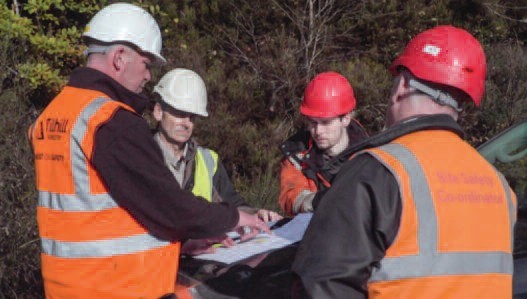It’s good to start the New Year on a positive note and celebrate the fact that we do get things right the majority of the time.
We’ve seen a decrease in environmental incidents during 2019 with fewer diffuse pollution events occurring despite areas of heavy rainfall towards the end of the year.
Getting it right means improvement to our water quality and an increase in wildlife and biodiversity. Some of our rarest protected species, such as the Freshwater Pearl Mussel, rely on the good quality of the watercourses around which we work. Silt and soil getting into watercourses and rivers has a significant detrimental impact on their survival.
Planning and thinking ahead
With that in mind we must make sure we are planning and thinking ahead to the spring and early summer. Over the years we’ve seen a trend on harvesting and ground preparation sites where we’ve been caught out through having insufficient controls in place on site to deal with high rainfall in early Spring.
We must keep the positive trend going and remain on top of site controls to prevent diffuse pollution, to ensure we retain some of our most threatened and historic species.
Most diffuse pollution events are avoidable and occur when:
- Work starts without an agreed method statement.
- Information about the site is poorly communicated.
- Regular checks on control measures are not taken.
- Developing problems are not reported and quickly acted on.
Remember:
Forest Works Managers:
- Communicate information on site constraints.
- A clearly marked Hazards and Constraints map is essential.
- Agree control measures with contractors, including:
- Silt traps, filter zones etc.
- Protection of private water supplies.
- Plans for emergency preparedness.
- Check that agreed controls are put in place and remain in place as work continues.
- Make sure action is taken when controls start to fail or conditions change.
Contractors:
- Work with the Forest Works Manager to plan for protection.
- Agree suitable locations for log bridges, extraction or access routes.
- Never start work without a clear hazard and constraints map, work instruction or method statements.
- Brief all site operatives, make sure everyone is aware of the requirements for preventing pollution.
- Check that agreed controls are put in place and remain in place, especially as site conditions or operators change on site.
Contractors:
- Keep a close look out for developing problems.
- Check watercourses from time to time for first signs of siltation.
- Report issues on site early on especially when weather deteriorates on site.
STOP, THINK and ACT when problems start to develop and before a pollution incident happens.
We all have responsibilities on forestry sites to protect our environment.



